This story plotting guide covers everything from brainstorming plot ideas to plot development, story structure and more. Use the links above to jump to the section relevant to your current stage of story development.
Story plotting: Key terms and concepts
Read an overview of key story plotting terms and definitions:
What is a story’s plot?
Plot is the series of events that form a process of change in a novel, short story, screenplay, stage play, video game or other work of fiction.
Plot describes patterns of events and situations, arranged to emphasize relationships between events (such as cause and effect, consequences, goals and prerequisite actions).
Sources: Oxford Learner Dictionaries, Oxford Reference.
What is a subplot?
A subplot is a secondary story arc, often contributing another angle on a primary story theme.
What is plot structure?
Plot structure is the way incidents in a story are arranged in patterns such as timelines (chronology), story events (such as scenes and sequels), or broader structure spanning across entire chapters and scenes (such as three-act structure or ‘The Hero’s Journey’).
Keep reading for a dedicated section on story structure with links to helpful plot structure resources.
What are scenes and sequels?
A scene is a sequence of actions, often within a single story setting, that drives the story forwards.
For example, ‘in this scene, the hero is at home when a visitor brings news of an invasion’.
Many plotting guides refer to scenes and sequels (not to be confused with sequels in the book series sense). This concept draws from Dwight V. Swain’s Techniques of the Selling Writer (1965).
Swain defines a scene as a story unit where a goal leads to conflict and disaster. A sequel follows a scene and provides a link to the next scene while showing a reaction, dilemma, and decision.
Example of scene and sequel pair:
Scene: High school girl has crucial exam to write (goal). An argument with a mean neighbor (conflict) leads to her missing transport to the exam venue (disaster).
Sequel: Girl calls her mom in despair (reaction). Her mom tells her to hail a cab but she doesn’t have money (dilemma). Girl decides to … (decision).
GMC
Plot in stories is driven by characters’ desires, goals, conflicts, disasters and dilemmas.
GMC, short for ‘goal, motivation and conflict’ (and popularized by Debra Dixon in GMC: Goal, Motivation and Conflict) refers to core elements of character development (as we discuss in our complete guide to character creation).
Goals are what characters want, motivations why they want them, and conflict the obstacles (internal or external) that complicate the path to success.
What are story beats?
A story beat or just ‘beat’ is a term from screenwriting. It is a moment that propels the story forward, and is the smallest unit of action (a scene may contain multiple beats).
Story beat examples:
Girl leaves her apartment in a hurry. Cop makes a disturbing discovery at a crime scene.
Besides moving the story forward, beats create an intentional shift in tone or mood (for example, increasing a scene’s mystery or suspense).
What is a story arc?
A story arc or plot arc is the pattern of rising and falling action or scenes and sequels that emerges over a novel, or a season of a TV series.
An arc implies change (for example, an elected official being tempted down a path of corruption; or a new member of a school theater club becoming an accomplished singer or dancer).
Story arcs are important in longer forms such as novels or TV series.
For example, in a TV series, each character may have their own story arc that spans the series, developing them over its course.
What is the inciting incident or event?
The inciting incident or setup is the sequence of events (or watershed event) early in a story that gives the plot a reason to unfold.
For example, in an academic fantasy novel about mastery of magic, it may be the arrival of a letter from a school of magic (or a school meant to suppress the protagonist’s magic).
The inciting incident typically occurs within the first 10 to 15 percent of the story, as it is what hooks your reader to continue.
Recommended reading
Remember: Plot is no more than footprints left in the snow after your characters have run by on their way to incredible destinations. Plot is observed after the fact rather than before. It cannot precede action.
Ray Bradbury
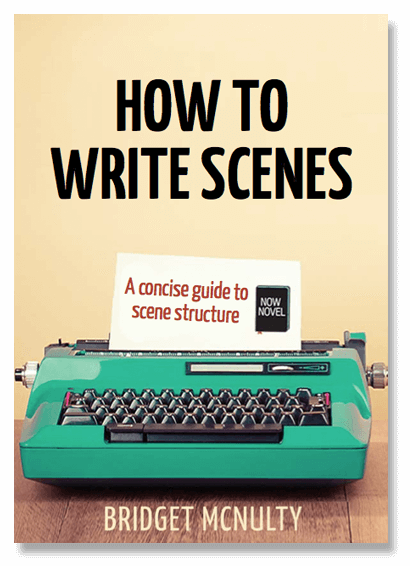
GET YOUR FREE GUIDE TO SCENE STRUCTURE
Read a guide to writing scenes with purpose that move your story forward.
Learn morePlot types: Episodic, linear, and plot archetypes
In this section of the guide, we’ll explore types of plot.
How do episodic storylines in TV screenplays differ from more continuous/dramatic plots we see in most novels? What are common plot archetypes or story archetypes you can draw on and adapt to create your own original stories?
Overview of common plot types
Episodic plots
Episodic storytelling is one of the most common types of plot in TV and film.
In episodic plots, self-contained sequences of events may connect to other episodes because the events:
- Feature the same characters as other episodes (for example, the books and films in Ian Fleming’s James Bond series)
- Unfold in the same story setting or universe as other episodes
- Explore similar themes to other episodes (for example, in a cozy mystery series like Murder, She Wrote, each episode revolves around the solving of an unexplained disappearance, death or other mystery)
Genres that often feature episodic plots include action, mystery and adventure (for example in Homer’s Odyssey, in which the titular hero Odysseus has many adventures, each recounted as separate episodes in different locations).
Dramatic or climactic plots
Dramatic or climactic plots, compared to episodic formats, typically focus on a single main event.
They typically build towards the resolution of a primary conflict or unknown, rather than having mini episodic story arcs, each with their own build-up and resolution.
In a story cycle such as Tolkien’s Lord of the Rings cycle, for example, the storyline revolves around the core conflict – the threat of Sauron’s return to power, and the necessity of destroying the One Ring to prevent this (though many subplots unfold, most serve this one, overarching goal).
Plot archetypes in storytelling
In fiction writing, there are plot archetypes that recur and are recycled across time. Myths, legends and folk tales acquire new life in modern stories that draw on age-old archetypes.
Seven plot archetypes
- Rags to riches: A tale where a character passes from obscurity to fame, poverty to wealth, or ignorance to enlightenment.
- Overcoming the monster: A story where the protagonist must overcome some terrible, primordial beast or evil.
- The quest: A character or group is given a vital task (for example, King Arthur’s knights’ quest for a holy chalice in Arthurian legend).
- Voyage and return: A plot in which a character travels far to return changed or transformed (e.g. The Odyssey).
- Comedy: A plot revolving around farcical elements such as mistaken identities that typically has a happy ending or (in English literary history) a wedding.
- Tragedy: A story about downfall stemming from poor choices, madness or other affliction, evoking emotions such as empathy or pity.
- Rebirth: A story where a character goes from the mask of identity to embracing their essence or becoming their true self (for example, the tale of King Arthur’s passage from ordinary boyhood to becoming king).
These are just seven story archetypes proposed by Christopher Booker in The Seven Basic Plots: Why we tell stories (2004).
Learn more about types of story plots:
Types of stories: 7 archetypes (and ways to use them)
Learn about story archetypes such as ‘Rags to Riches’ and ways to use them.
Recommended reading
Characters are incredibly important, but I tend to build them around the plot during the outline stage. However, once I’m writing the manuscript, the characters I’m writing dictate how the plot unfolds.
Aimee Carter
Plot ideas: Ways to come up with your story scenario
Finding plot ideas for a story offers many fun methods and approaches.
To find a story idea, try:
- Searching topics that interest you (e.g. ‘the Cold War’) in Google News or Reddit to find the spark of an idea
- Starting from a beat typical of your genre (for example, the ‘meet cute’ in romance or the ‘crime scene investigation’ in a police procedural). What would make an interesting or surprising meet cute or crime scene?
- Gradually expanding your plot idea: Write a two-line story idea summary as a sentence, then a paragraph, then a page
Read articles on ways to find novel plot ideas:
Recommended reading
The one thing that you have that nobody else has is you. Your voice, your mind, your story, your vision. So write and draw and build and play and dance and live as only you can.
Neil Gaiman
Plot development: Creating intriguing change
Once you have your basic story idea, develop your plot by:
Outlining and organizing scenes and beats
Many writers prefer to ‘pants’ (writing ‘by the seat of your pants’ and seeing where fantasy and imagination take you).
Outlining and organizing scenes provides useful structure, though. Parameters that make the blank page a bit less daunting because infinite possibilities are reduces to feasible situations and plot points for your story’s setup.
Plotting scenes and sequels
A format such as scenes (goal, conflict, disaster) and sequels (reaction, dilemma, decision) may prove useful. Why? Because your story’s events need to keep supplying drama, suspense – narrative interest, in a nutshell – to keep readers engaged.
Creating your own plot template to fill out
Once you have an idea of your story’s scenario (or a plot archetype such as the heroic journey your story might follow with modifications), you could develop your own plot template.
Example: Rags to riches plot template:
Chapter 1 (rags): Introduce protagonist in humble state and the conflicts their situation enable. Chapter ends with revelation of a possible way out.
Chapter 2 (enforcer intro): Introduce major adversary invested in maintaining the status quo (for example, Cinderella’s stepmother who finds in Cinderella captive labor).
Chapter 3 (helper intro): Introduce helper figure who ease’s protagonist’s burden and helps them further their goals.
Chapter four through twelve might show the ways the protagonist is helped or hindered as they ascend in wealth or power.
Use the Scene Builder in Now Novel’s story dashboard to create summary cards and drag and drop scene ideas to find the order of your story’s plot points.
Finding subplots or secondary characters that develop key storylines
Plot development unfolds naturally out of characters’ goals, motivations and the conflicts that arise in pursuit of them.
Subplots and secondary characters may add complications or parallel story arcs.
In Homer’s Odyssey, Odysseus blinding the cyclops angers his father, the sea God Poseidon, who in vengeful reaction puts new obstacles in Odysseus’ path to delay his homeward journey further.
In this example, we see how secondary characters and subplots create new plot twists and turning points that complicate a character’s progress and develop the story.
Learn more about plot development and turning rough story ideas into fleshed out first drafts:
How to develop a story: 10 steps to a winning plot
Learn how to develop a story with ten tips to ensure dynamic change.
Recommended reading:
- How to start writing a book: Developing rough ideas
- How to write a plot outline: 7 plotting techniques
- How to write the first chapter of a book: 7 ideas
- Writing Chapter 2: Developing your opening hook
- How to write a book chapter: 7 popular novels’ insights
- Writing first drafts: 10 ideas to reach final drafts

Join 13,000 writers
Be first to know whenever we publish and get bonus videos
and the latest Now Novel news.
Plot and conflict: Dilemmas, disasters and decisions
In the first section of this story plotting guide, we mentioned Dwight Swain’s definition of a sequel – how a follow-up scene often shows a reaction to a conflict or obstacle, followed by a dilemma and decision.
For example, a character trapped between rocks on a dangerous climb has to make an extremely tough call in order to free themselves (the gruesome plot of 127 Hours).
To plot conflict as an agent of change in your story, ask:
- What do my characters want more than anything?
- What obstacles, internal or external, could stand in their way?
- How will they react to said obstacles?
- What difficult choices or dilemmas will the obstacle create?
- How will the character choose to act and resolve the dilemma?
Examples of plot-driving scenes and sequels by genre
Here are simple examples of how conflict can drive plot, in different genres:
Romance plot conflict:
Scene: Guardian forbids protagonist from seeing love interest from rival clan (conflict).
Sequel: Protagonist is angry (reaction), doesn’t know how they will see love interest now they are being watched carefully (dilemma). Resolves to break the decree by sneaking out during upcoming ceremony in which their guardian has an active part and will be distracted (decision).
Crime plot conflict:
Scene: Rookie cop injures a civilian due to not following the correct procedure (conflict).
Sequel: Their mentor is protective of them (reaction), but is obligated to report their failure (dilemma). Mentor downplays their ward’s error, putting both of their jobs in jeopardy should the truth of what happened come out (decision).
What is your genre? Try to write a conflict-driven scene and sequel combo that provides an idea for a scene and follow-up transition.
Read our complete character guide for more on types of conflict and creating external and internal conflict.
Using conflicts in a story: 6 helpful conflict examples
Read about 6 core types of conflict in fiction and ways to use conflict to drive plot.
Learn more about plotting and the role of conflict in moving your story forward:
You can’t build a plot out of jokes. You need tragic relief. And you need to let people know that when a lot of frightened people are running around with edged weaponry, there are deaths. Stupid deaths, usually. I’m not writing ‘The A-Team’ – if there’s a fight going on, people will get hurt.
Sir Terry Pratchett
Plot devices: Hooks, twists, cliffhangers and MacGuffins
In story plotting, there are many narrative devices or plot devices that help to create intrigue, surprise, and characters’ purpose.
Some plot devices are specific to particular genres. For example, in mystery writing, the ‘red herring’ (an object or other clue of seeming import that turns out to be an irrelevance that leads the sleuth down the wrong path).
Common plot devices include:
Story or scene hooks
The ‘hook’ in a story or scene is a passage that compels us to keep reading. For example, the opening of David Guterson’s Snow Falling on Cedars:
The accused man, Kabuo Miyamoto, sat proudly upright with a rigid grace, his palms placed softly on the defendant’s table – the posture of a man who has detached himself insofar as this is possible at his own trial.
David Guterson, Snow Falling on Cedars (1995), p.1.
Plot twists
Plot twists are unexpected turns of events that take your reader by surprise. They are particularly common as endings to short stories (for example, in Roald Dahl’s story ‘Lamb to the Slaughter’ (Harper’s, 1953) in which a wife who’s bludgeoned her husband with a frozen leg of lamb serves the evidence to the detectives).
Cliffhangers
In story plotting, cliffhangers are suspenseful endings at key moments (such as scenes, chapters or episodes in a series) that keep the reader or viewer waiting to find out what happens.
A classic example is David Lynch’s 90s cult series Twin Peaks, in which the ‘good guy’ detective appeared to have morphed into the ‘bad guy’ in the series’ finale.
MacGuffins
A term popularized by Alfred Hitchcock, a MacGuffin is a plot device such as an object a character is seeking that gives a reason for the story to unfold.
For example, in Quentin Tarantino’s Pulp Fiction, we never see the contents of a mysterious briefcase the characters Vincent and Jules must return to Marcellus Wallace. The MacGuffin simply provides a reason for this contact.
How to use plot devices well
To make the most of plot devices
- Avoid contrivance
Unless you’re writing spoof or parody which finds humor in contrived situations, be wary of making plot devices very obvious.
- Use plot devices sparingly
A twist might be fun or shocking mid-way through the story, but if there’s a twist every other page this may become fatiguing or may make the story seem directionless.
- Work with your story’s narrative needs
Can you get away with mystery suitcases whose contents are never revealed? Or will the typical reader in your genre expect more? It helps to read widely and understand typical plot device use for your genre.
Learn more about plot devices:
8 story hook examples (how to grab attention
Read 8 ways to grab attention at the top of your story.
Recommended reading

GET HELP PLOTTING YOUR BOOK
Join Now Novel for a helpful crit community and live webinars and plotting tools when you upgrade.
DEVELOP YOUR STORYStory structure: Finding the form for your plot
Story structure isn’t necessarily something you have to find or impose on your story before writing it.
Understanding key concepts of plot structure, though, will help to ensure that each part of your story serves a clear purpose, be it grabbing the jugular of your reader’s curiosity, or introducing the most vital details of your story’s world.
What is plot structure?
Vital elements of general plot structure include:
- Exposition: Story material that introduces important context for events that will unfold. A minefield for long-winded telling.
- Setup: The part of the story establishing the inciting incident or ‘call to adventure’ that gives the story and its change process reason to occur.
- Plot development: Chains of events or cause and effect (or scenes and sequels) that show events and their underlying goals and conflicts, choices and consequences.
- Climax: The part of the story that builds in intensity towards resolution. Often the stakes are highest, and the going gets toughest.
- Denouement: From the French for ‘unknot’, the part of the narrative that resolves lingering unknowns, questions and conflicts.
The above is a very simple five-part model of plot structure. Other types include:
Three-act structure
Three-act structure is a popular plot structure for stage plays, films and novels alike. Syd Field formalized it in Screenplay: The Foundations of Screenwriting.
Three-act structure has three basic parts:
- Setup (Act 1): Introduces place, characters, and the scenario for the plot (including the inciting incident).
- Confrontation (Act 2): Main character or character group struggles to attain goals established in the setup.
- Resolution (Act 3): Peak of tension reached at the end of Act 2 resolves towards the ending.
A simple plot structure diagram of this form:
The Hero’s Journey
A plot structure synonymous with literary scholar Joseph Campbell who wrote The Hero with the Thousand Faces. Campbell proposed a ‘monomyth’ or common pattern in the way people tell stories about heroic deeds. The twelve-part hero’s journey includes:
- Ordinary Life – the hero’s life before adventure calls.
- Call to Adventure – a hero is called to make a choice, such as depart their hometown.
- Refusing the Call – the hero resists the Call to Adventure due to inner conflict.
- Meeting a Mentor – a meeting with a guide figure gives the hero new courage to accept the call.
- Crossing the Threshold – the hero crosses a point of no return but must continue.
- Tests, Allies, Adversaries – the hero encounters trials but finds help (as well as opponents) in the process.
- Approaching the Cave – the hero nears the greatest threat and doubts return.
- Surviving the Ordeal – a test or inner crisis leads to new resolve.
- Collecting reward – the hero attains a reward for their perseverance so far.
- The way back – with the reward claimed, the journey homeward starts.
- Resurrection – the hero faces a final challenge greater than themselves.
- Return – the hero finally returns, changed.
Learn more about story structure and plotting using familiar story patterns:
When I storyboard, they’re just fragments of thoughts. I write in three acts like a movie, so I have my plot points up on the preliminary storyboard.
Janet Evanovich
What is a plot question you’ve been thinking about? Share it in the comments.
Start brainstorming your plot now and outline and move scenes around in the Scene Builder to storyboard your book.

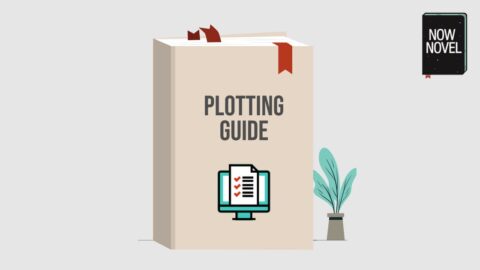
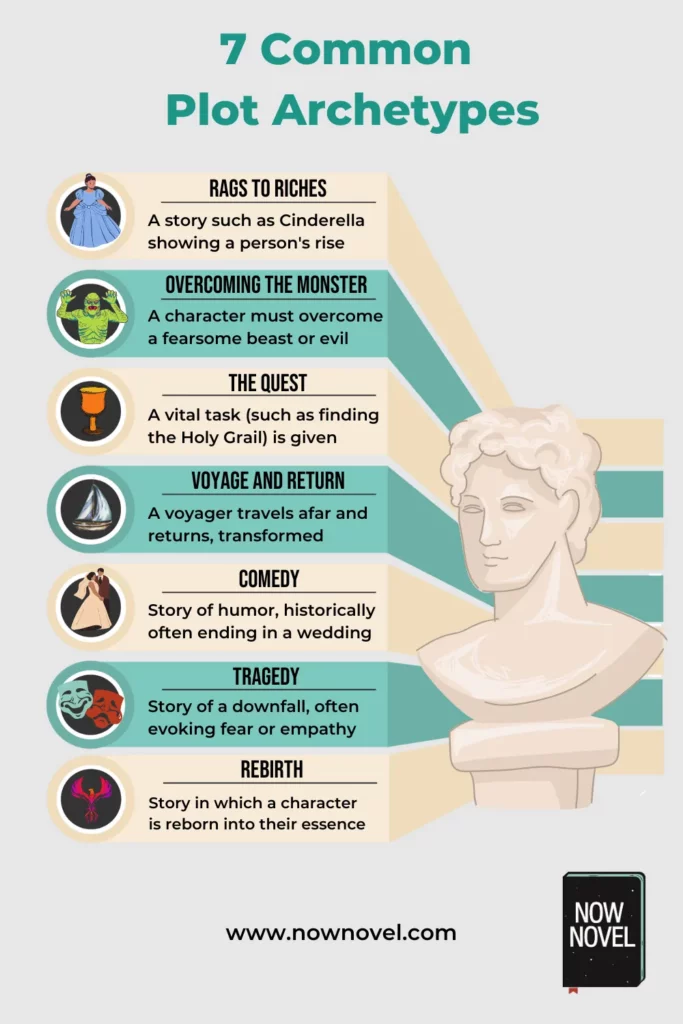
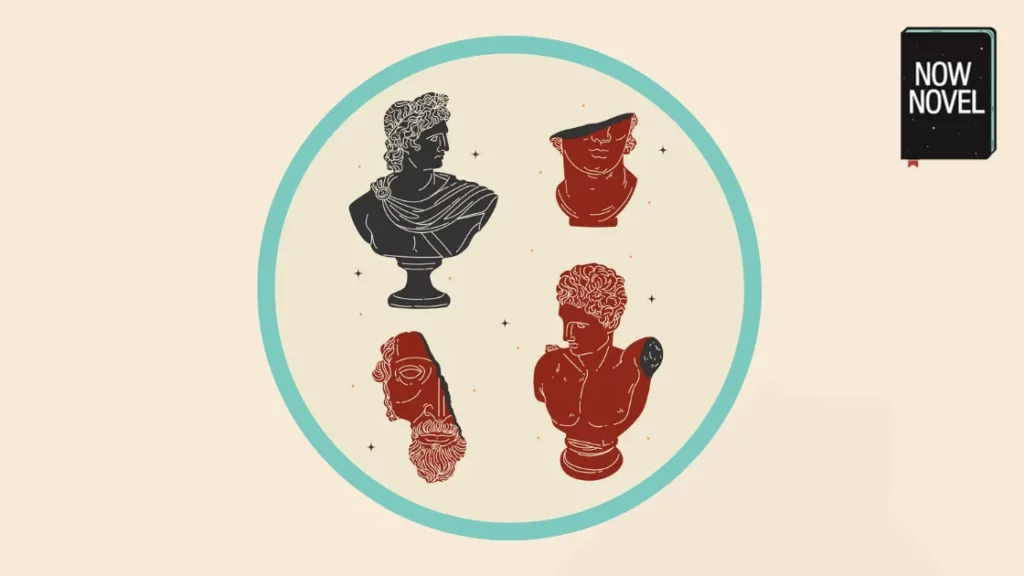
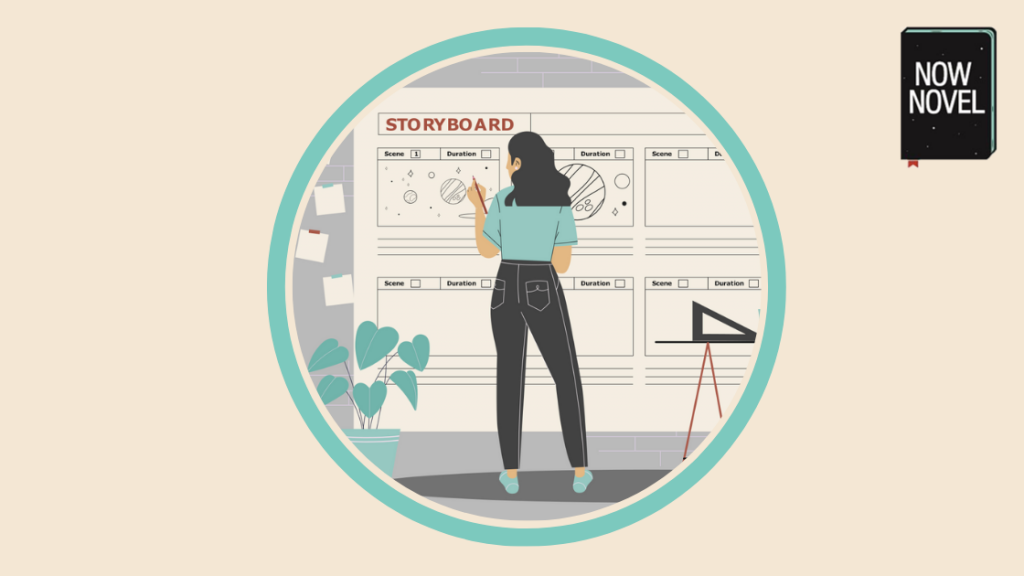
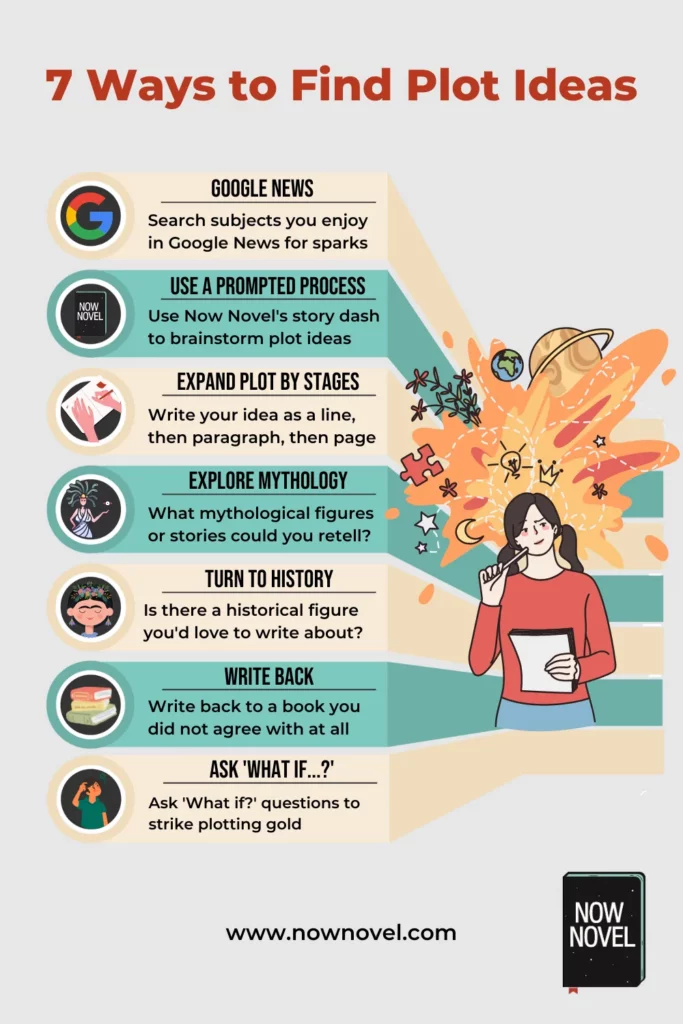
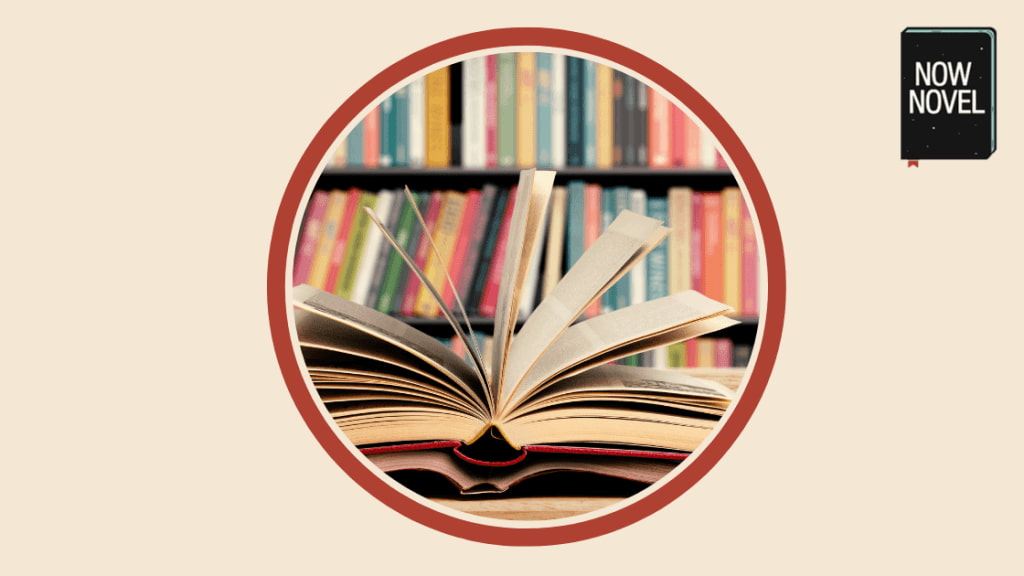
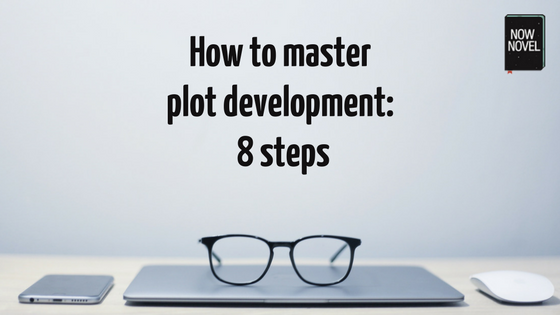

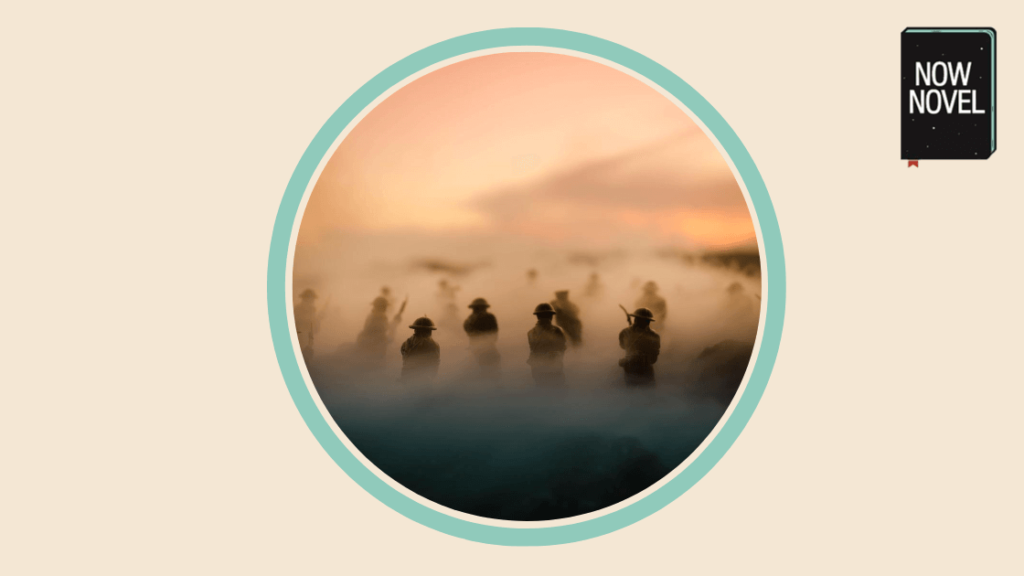
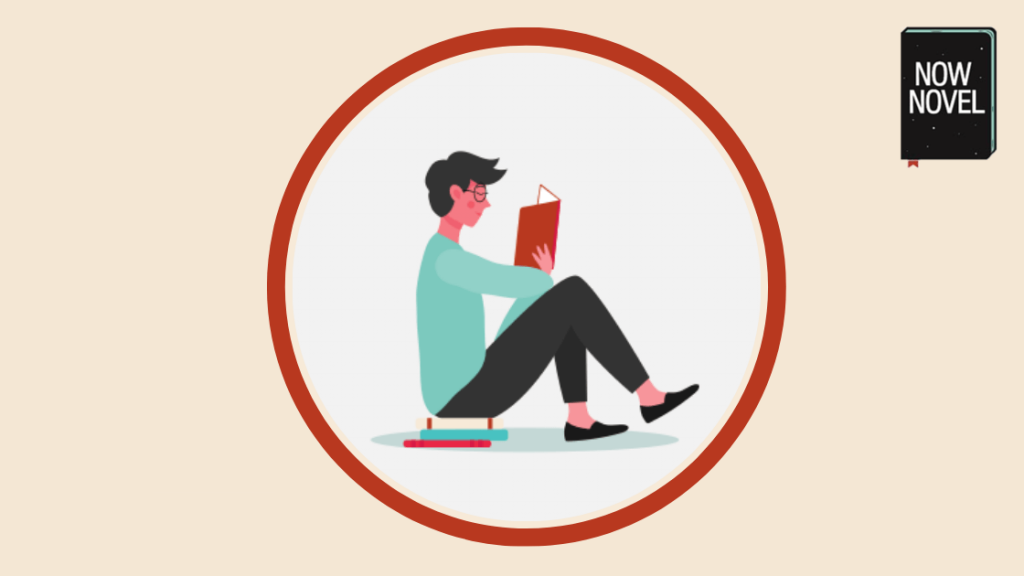

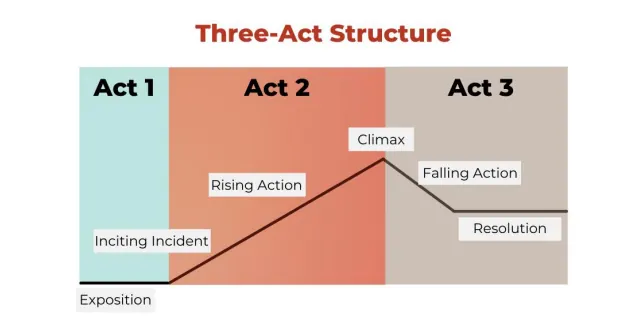
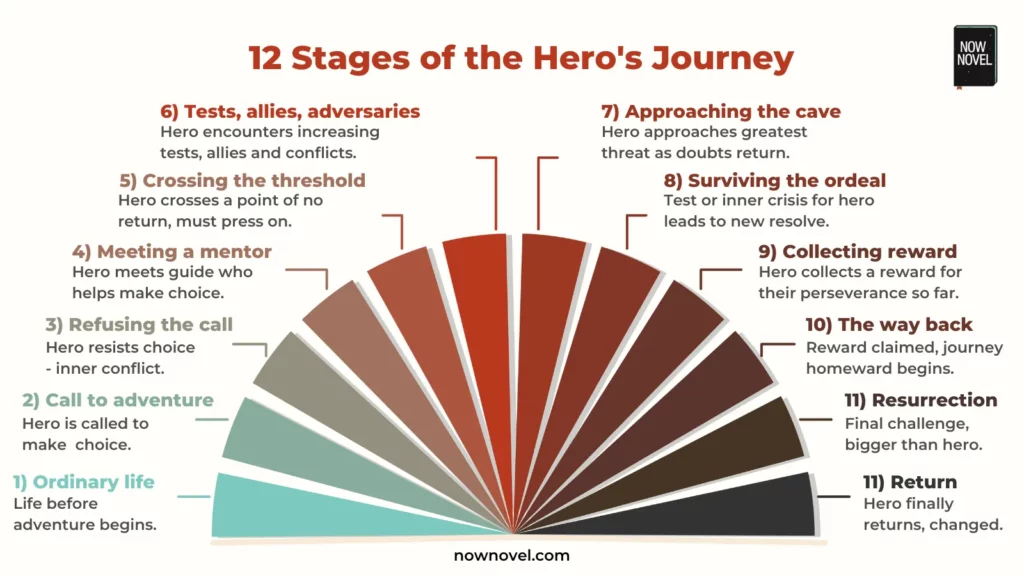

2 replies on “Story plotting and structure: Complete guide”
I wish you had this in pdf format.
Hi G.J., thank you for your feedback! We do have a plot and story structure guide (albeit a briefer one) I can send you the PDF for, please contact our help mail if you’d like that so that they can forward me your email. You can also save a page as PDF from your browser. Thanks for reading our blog.